12 Interesting Facts About Nasa’s Mars Rovers You Never Knew (2024 Updates)
Last Updated on
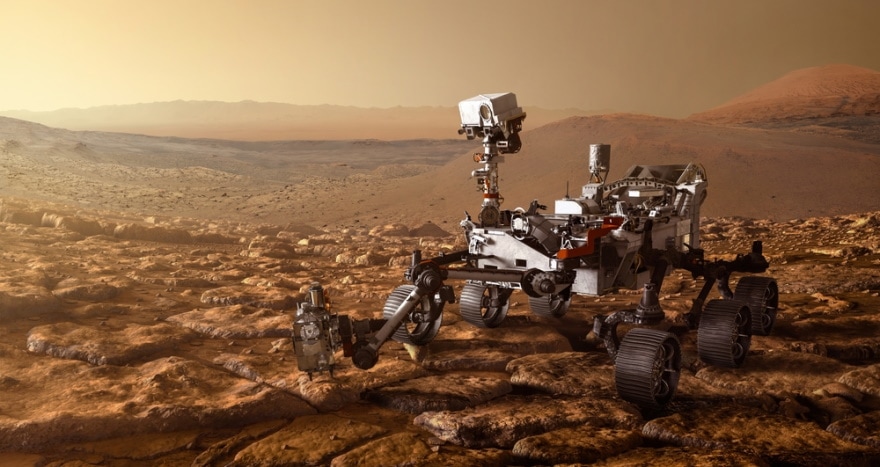
From finding water to tracing evidence of past life, Nasa’s Mars rovers have worked tirelessly for over two decades, providing invaluable data and photographs of the red planet. If you’ve ever wondered about how many rovers Nasa has launched and successfully landed on Mars, what their missions were, and what each rover has discovered, then you’ve come to the right place.
In this article, we’ll let you in on 12 interesting facts about Nasa’s five Mars rovers, starting with Sojourner, the first vehicle to rove another planet, through to Spirit and Opportunity, Curiosity, and finally, Perseverance.

The 12 Interesting Facts About Nasa’s Mars Rovers You Never Knew
Sojourner
| Launched | 1996 |
| Traveled | Just over 330 feet |
| Mission | Sojourner was an experiment to test if a rover would work in Mars’s environment. |
The Sojourner rover was sent to Mars as a part of Nasa’s Pathfinder mission. It was the first vehicle to drive on another planet’s surface, and it paved the way for more advanced, larger rovers to be created.
Equipped with cameras on its front and rear, the Sojourner lasted for 83 Earth days and took more than 550 images of Mars.
1. Sojourner was named after Sojourner Truth
Sojourner was named by a 12-year-old girl who won a worldwide competition for her idea of dedicating the rover to Sojourner Truth, who was a civil-war era African American abolitionist. The suggestions for Marie Curie and Judith Resnik took second and third place, respectively.
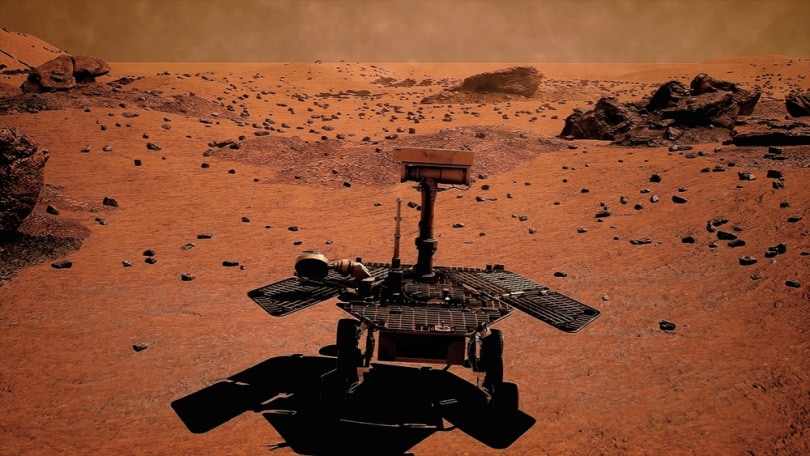
2. Sojourner was the size of a microwave
Weighing only 24.3 lbs, the first robot to rove on another planet was about the same size as a microwave. It could move at up 0.6 feet per minute on its six wheels, though it was not able to stray more than around 1,600 feet away from Pathfinder without risking problems with its communication.
Not only was the Sojourner the first rover to work on another planet, but it also remains the smallest rover ever sent to Mars.

Spirit and Opportunity
| Launched | 2003 |
| Traveled (Spirit) | 4.8 Miles |
| Traveled (Opportunity) | 28 Miles |
| Mission | Robot geologists” sent to search for traces of water in rocks and soils |
Nasa’s twin Mars rovers were sent to the opposite sides of Mars on a mission to discover evidence of water in the red planet’s past. The two rovers, which were equipped with identical instruments, were launched a few weeks apart and continued to operate for several years.
Spirit stopped responding to communication from Nasa in 2010, while Opportunity stopped responding in 2018 after a Martian dust storm. Combined, their lifespan totaled up to over 20 years.
3. Spirit and Opportunity took 342,432 images

With Spirit capturing 124,838, and Opportunity capturing 217,594 raw images, the twin rovers provided everybody on Earth with a much more detailed and beautiful view of our neighboring planet than we had ever seen.
As well as being equipped with panoramic cameras that study the minerals and structure of Mars’s terrain, the rovers each had a microscopic imager for taking close-ups of rocks and soil.
4. Spirit and Opportunity carried a piece of the World Trade Center to Mars
The company that produced the twin rover’s rock abrasion tool, a tool that gnaws at the surface of rocks to reveal the minerals beneath, was Honeybee Robotics, based in New York City. The team felt compelled to pay tribute to the victims of the horrendous terrorist events of 9/11. In the end, they did so by recycling aluminum that was recovered from ground zero for parts of the rock abrasion tool.
5. The twin rovers broke records
- Spirit took the first color photographs from a rover on another planet.
- Both rovers found “blueberries” on Mars’s surface. These so-called blueberries are actually small spherical objects rich in iron. It’s believed that they were once formed in mineral-rich water.
- Opportunity found gypsum on Mars, yet another sign of water having existed on the red planet in its distant past.
- Opportunity recorded the first ever video taken of a dust devil on another planet.
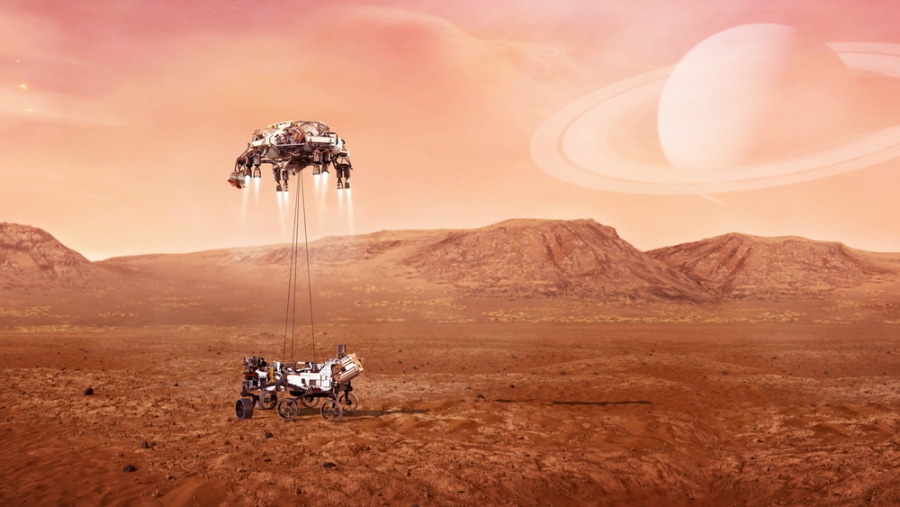

Curiosity
| Launched | 2011 |
| Traveled | 17.3 miles (and counting) |
| Mission | Explore whether Mars had ever been capable of supporting microbial lifeforms |
Also named the Mars Science Laboratory, Curiosity was sent to Mars with all the equipment it needed to analyze the red planet in great detail.
For nearly 20 years, Curiosity has been investigating Mars and sending back invaluable data. It remains operational to this day, having survived Mars for 3469 sols as of May 12, 2022.
6. Curiosity is about the size of a car
Curiosity is huge. Excluding its arm, the rover is 10 feet long, 9 feet wide, and 7 feet tall. Its robotic arm, which is used to collect samples, extends its reach by about 7 feet. The rover weighs 1,982 lbs on Earth, but only 743 lbs on Mars due to weaker gravity.
A bigger rover means bigger wheels! Nasa’s roving science lab was fitted with wheels far bigger than its predecessors. Curiosity’s six wheels measure 20 inches in diameter. For comparison, Sojourner’s wheels measured 5.1 inches, and Spirit and Opportunity’s only 9.8 inches in diameter.
7. It’s equipped with a laser capable of vaporizing rocks
Curiosity’s Chemistry and Camera instrument, known as ChemCam, consists of a laser, a telescope, a micro-imager, and a spectrometer.
ChemCam fires a laser towards the rocks that scientists are interested in. As the surface of the rock is vaporized into a plasma of its component gases, Curiosity uses its micro-imager and spectrometer to analyze the plume. This data gives extraordinary, never-seen-before details about the geology of Martian rocks and soil.
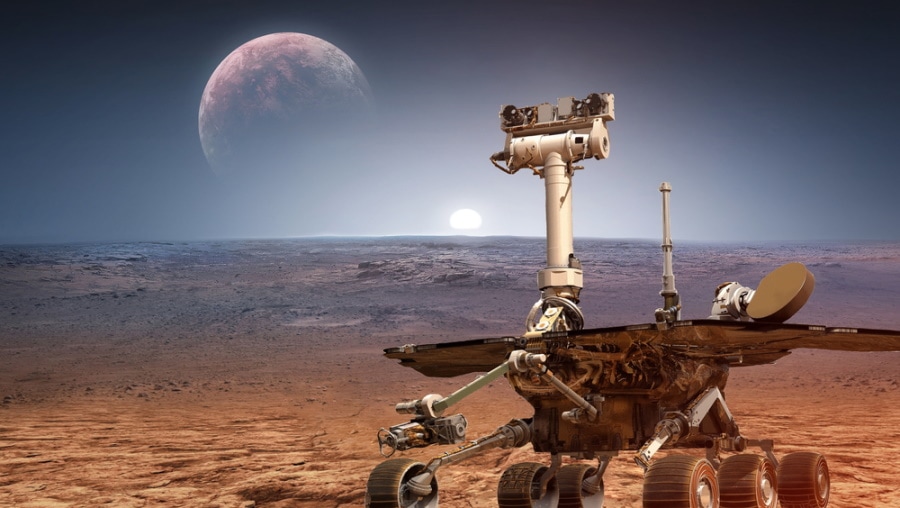
8. Curiosity has 17 cameras
Curiosity’s many cameras have different functions and therefore different specifications. Some, for example, its hazard perception or navigation cameras, take black and white photographs, while others, like the one mounted on the robotic arm, take high-resolution color photos.
Between November and December 2019, when Curiosity was already 8 years old, the rover captured its highest-resolution panorama of the red planet’s surface yet. Composed of more than a thousand images, the final product contains 1.8 billion pixels.

Perseverance
| Launched | 2020 |
| Traveled | 7.11 miles (and counting) |
| Mission | The main mission for Perseverance is to seek out signs of a habitable environment in Mars’s past, and even signs of past microbial life |
Launched amidst the start of a pandemic, Perseverance traveled just under 293 million miles to get to Mars. So far, it has captured 250,250 raw images, video footage of a Martian solar eclipse, and recorded and sent back audio from the surface of Mars.
9. Perseverance recorded the first ever audio from another planet
For decades now, rovers and landers have sent back images from Mars. But with Perseverance’s microphones, the world was presented with the first audio recording from another planet.
Since the first recording shortly after its landing in February 2021, Perseverance has recorded hours of sounds from the surface of Mars, helping scientists to make an incredible discovery about the planet’s acoustics – that there are two speeds of sound on Mars.
Mars’s atmosphere creates a distortion of sound, with higher-pitched sounds having a faster speed than those with a lower frequency. So, depending on the frequency changes in a person’s voice, it may be quite difficult to hold a conversation on Mars!
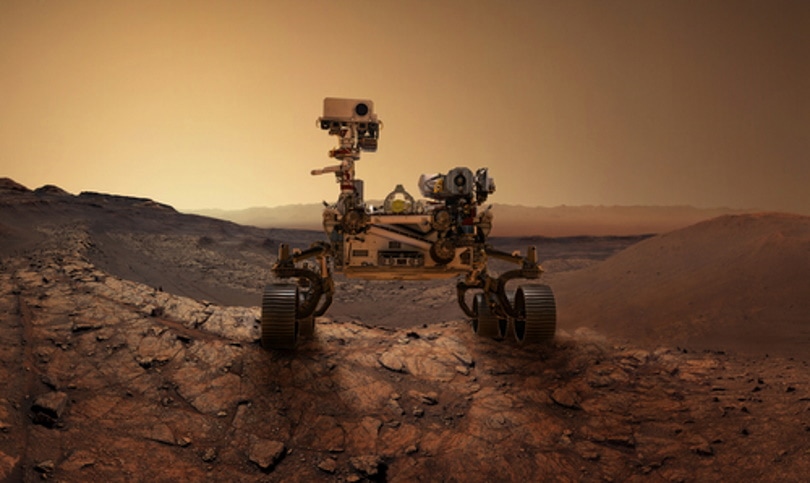
10. Perseverance took fragments of space suits to Mars
Ultimately, Nasa is preparing for a manned mission to Mars. One of the important questions that need to be answered for that to happen is whether the current materials used for spacesuits would be safe and appropriate for the environment, because the thin atmosphere on the red planet allows more radiation to reach its surface.
In the same way that Perseverance can study the composition of rocks and soils, it will also analyze the various spacesuit materials it has onboard, which include a piece of polycarbonate used for visors, for breakdown due to radiation. This will help scientists here on Earth to develop new spacesuits with better materials, to keep future astronauts safe from the sun’s harmful rays.
11. Perseverance carried a passenger – Ingenuity
As Perseverance descended towards the red planet, it carried precious cargo strapped to its belly – a helicopter named Ingenuity. Ingenuity would go on to demonstrate controlled flight on another world for the first time.
Once Perseverance, also known as Percy, reached the suitable area for a test flight, it dropped Ingenuity to the surface. The helicopter then performed a series of test flights, marking a new success for Nasa, and the exploitation of Mars.
Perseverance and Ingenuity’s partnership is now helping Nasa scientists to pave a future in which rovers and aerial explorers can work together.

12. It’s as heavy as a hippo
When it comes to dimensions, Perseverance is about the same size as Curiosity: 10 feet long, 9 feet wide, and 7 feet tall. Weighing 2,260 lbs, the newer rover is heavier than its predecessor.
Although the two rovers have similar dimensions, their tools do differ slightly. Among other things, Perseverance is equipped with 23 cameras, a laser, and upgraded instruments. Another factor that may have affected Perseverance’s weight is its newer, larger, and more robust wheels.

Conclusion
Mars rovers are developing and improving at a rapid rate. The machines have been vital in providing scientists with data, images, and resources that help them learn more about the red planet, from its past to its present. The information gathered by these incredible rovers will help Nasa pave the way for a future manned mission to Mars and propel humanity towards a multi-planetary existence.
But, perhaps even more importantly, learning about the red planet’s atmosphere and its past, allows scientists to understand more about our own planet. It helps to answer questions about where and how life began on Earth, why the two neighboring planets are so different now, and perhaps even give us insights into Earth’s future.
Featured Image Credit: Triff, Shutterstock
About the Author Cheryl Regan
Cheryl is a freelance content and copywriter from the United Kingdom. Her interests include hiking and amateur astronomy but focuses her writing on gardening and photography. If she isn't writing she can be found curled up with a coffee and her pet cat.
Related Articles:
15 Crucial Facts About Ultraviolet Rays & the Sun
What Constellation Is Spica In? The Interesting Answer!
10 Interesting Leo Constellation Facts, Myths, and FAQs
15 Interesting Pegasus Constellation Facts, Myths, and FAQs
6 Interesting Sagittarius Constellation Facts, Myths, and FAQs in 2024!
What Are Constellations? Where Did They Come From?
8 Interesting Libra Constellation Facts, Myths, and FAQs
What Is Infrared Radiation? Science-Based Facts & FAQ
